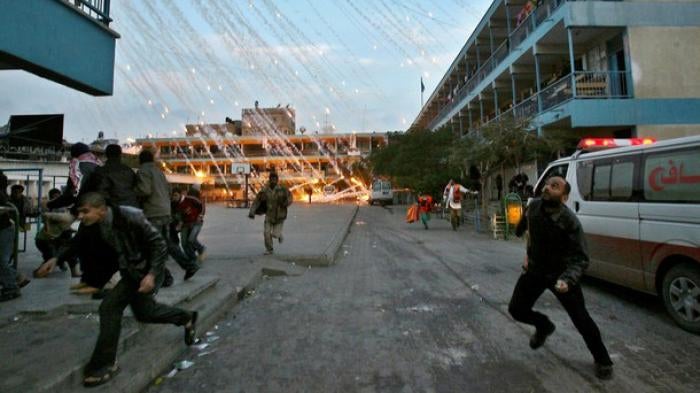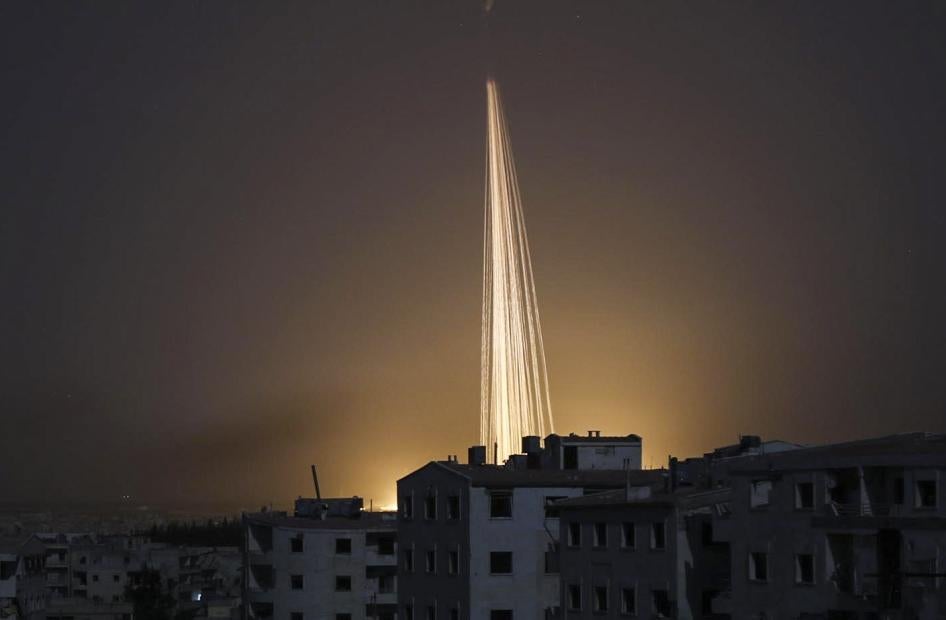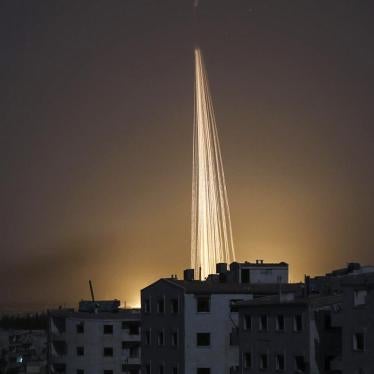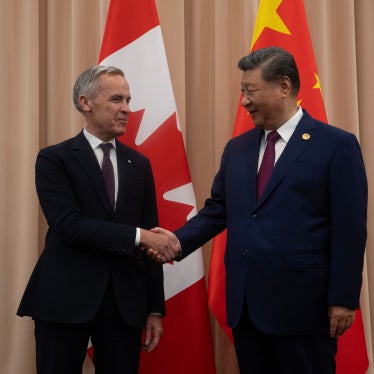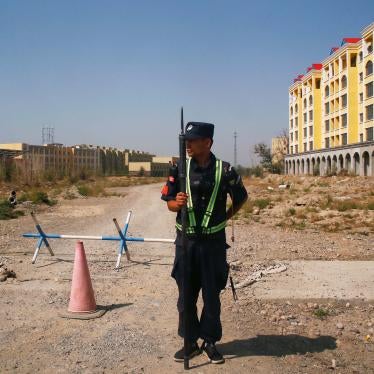(日內瓦)—人權觀察和哈佛法學院國際人權診所今天共同發表報告指出,鑑於燃燒武器導致的駭人灼傷和終身痛苦,各國政府應盡速修正現行條約的相關標準。
這份45頁的報告,《「燒盡一切」:燃燒武器的人命代價與國際法的局限》,詳細說明近年來武裝衝突各方使用燃燒武器,包括白磷彈,所造成的直接傷害和長期的生理、心理與社會經濟損傷。人權觀察總結指出,這類武器既灼傷人類又焚燬平民房屋與財物,各國應修正並強化相關國際條約加以管制。
「當受害者忍受著燃燒武器的殘酷後果,各國卻還在為了是否對這種武器進行正式討論而爭論不休,」人權觀察武器問題高級研究員兼國際人權診所武裝衝突與平民保護副主任邦妮・杜克蒂(Bonnie Docherty)說。「各國應當正視倖存者的長期痛苦,解決現行國際法的缺陷。」
該報告基於對倖存者、目擊者、戰地醫護人員、燒傷專家和其他專業人士的深度訪談,以及發表在各大醫學期刊的深入探討。其內容包括阿富汗、加沙和敘利亞等案例研究。
燃燒武器可以造成嚴重灼傷,有時深入骨骼,並可導致呼吸系統損傷、感染、休克和器官損壞。經過一段時間,大面積傷疤還會拉緊肌肉組織而造成肢體障礙。攻擊帶來的心理創傷及後續治療的痛苦,以及改變外貌的疤痕,則會導致心理傷害與社會排斥。
嚴重燒傷的治療過程原本就很艱苦,而武裝衝突地區醫療資源的不足常使情況雪上加霜。與燃燒武器有關的長期身心障礙、醫療照護成本以及財產損失,都會對社會經濟產生負面效應。
「燃燒武器會導致極其嚴重的灼傷,其破壞性遠非一般燒燙傷所能比擬,」曾在敘利亞診治燃燒武器受害者的內科醫生蘿拉・賀蘭姆(Rola Hallam)說。「它能燒盡一切。連鋼鐵都能被它燒毀,血肉之軀怎能受得了?」
1980年通過的《特定常規武器公約第三號議定書》專門管制燃燒武器,即各種通過易燃物質的化學反應產生熱力和火焰的武器。但兩個明顯的漏洞局限了這部條約的有效性。首先,其定義以設計為本,排除了某些具有燃燒效果的多用途彈藥,包括含有白磷者。其次,它對陸地投射燃燒武器的限制不及空投型彈藥。
人權觀察和哈佛國際人權診所表示,儘管該條約締約國多年來已對燃燒武器的使用表達憂慮,但當務之急是認真檢討第三號議定書的充分性。
特定常規武器公約年度會議預定於2020年11月11-13日在聯合國日內瓦辦事處舉行。然而,由於有關疫情的新限制,這次會議據報已在開幕前幾天宣告延期。
人權觀察和哈佛國際人權診所表示,雖然聯合國尚未決定常規武器公約年會的新日期,各國應利用等待期間尋求支持,以採取行動解決燃燒武器問題。
未來幾個月,常規武器公約締約國應達成協議,在預定2021下半年舉行的該公約五年審查會議上撥出時間,檢討第三議定書的充分性,並展開彌補該議定書漏洞的程序。
「已有許多國家表露意願,對第三號議定書的局限進行深入評估,」杜克蒂說。「少數攔路阻撓的國家應當認識到,審查和修訂這一過時公約是人道主義的必要要求。」
案例研究
阿富汗
八歲的瑞茲亞(Razia)一家人住在阿富汗鄉下的泥磚房子,2009年3月14日,來自交戰某方的白磷彈落在她家,使她受到嚴重灼傷。儘管在巴格拉姆(Bagram)空軍基地得到美國軍醫的治療,她身上仍留下永久疤痕,導致長期的身心創傷。
「瑞茲亞痛得不停大哭,」在巴格拉姆照顧瑞茲亞的創傷護理師柯林斯(Christine Collins)上尉說。「她還這麼小,就被這樣的事情毀了一生。」柯林斯以個人身份補充說:「對於這種類型的武器,應該要有某種限制。這是絕對的,毫無疑問。」
加沙
2009年1月4日在加沙北部,以色列部隊朝敵對的巴勒斯坦武裝團體發射三枚155公釐白磷砲彈,炸穿了阿布・哈里馬(Abu Halima)的住家屋頂。白磷產生的火焰直接造成家中五人死亡,另外五人受傷。
「所有東西都著火了,」莎芭・阿布・哈里馬(Sabah Abu Halima)說。「我先生和四個兒子活生生在我眼前著火;我唯一的女兒,還是個嬰兒,在我懷中燒熔了。怎麼能讓一個母親看著她的孩子們活生生被燒死?我救不了他們。我無能為力。」
敘利亞
敘利亞政府軍2013年8月26日向烏魯姆庫布拉(Urum al-Kubra)一所學校投下一枚燃燒彈。
「當時景象真的就像是世界末日,」治療傷患的蘿拉・賀蘭姆醫師說。「他們的衣服碎裂掛在身上。他們身上發出難聞的氣味,混合著肉體灼傷的焦味和化學合成物的異味。⋯他們顯然遭到嚴重燒傷。」
穆罕默德・阿西(Muhammed Assi)身上遍布疤痕,全身百分之85燒傷。「每次我出門,總是五到十分鐘立刻回來,因為我不想在街上遇到人問我,「你身上怎會這樣子?怎麼燒傷的?」他又說,「最糟的是我的小侄子都不敢靠近我,另一個侄子本來很喜歡抱我,現在也不敢跟我玩了。」
